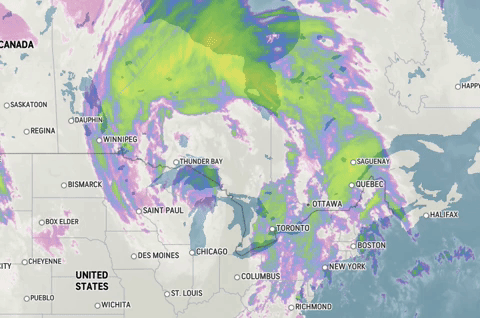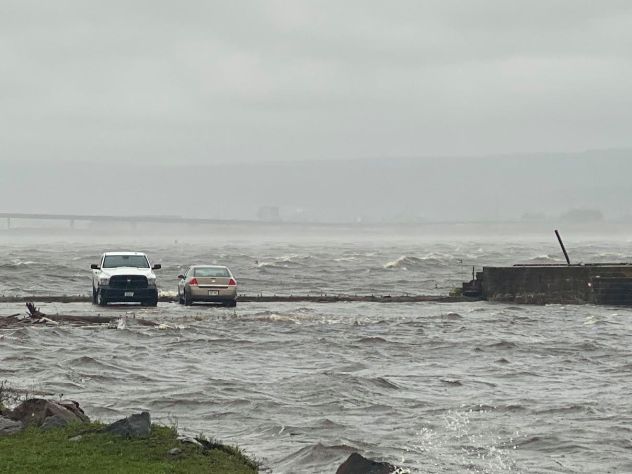- Fake job seekers are flooding the market, thanks to AI
- One set of evacuation orders lifted in Caldwell County after wildfire contained
- 'We gutted every building' | Chimney Rock rebuilding after Hurricane Helene
- 'We gutted every building' | Chimney Rock rebuilding after Hurricane Helene
- Debris from Hurricane Helene provides fuel, complicates containment for spring wildfires
VIDEO: Pummeling waves in Lake Michigan, flooding created by intense storm

Waves pummeled the shores of Lake Superior and Lake Michigan early this week as an intense storm system swept across the Great Lakes.
Winds howled from the Dakotas through Michigan, and AccuWeather Reporter Blake Naftel witnessed the power of the storm first-hand along the eastern shores of Lake Michigan.
Naftel was in Grand Haven, Michigan, on Tuesday morning when 50-mph wind gusts lashed the area. Those strong winds spawned large waves that crashed down on the Grand Haven South Pierhead Outer Lighthouse.
Large waves crashed into the lighthouse with water being sprayed even higher into the air after hammering the structure. Naftel captured this photo:
“The peak wave height observed from my location was around 9 feet, but not to say there were not higher waves over 10 feet,” Naftel said. “Many people were out taking in the waves.”
The pounding waves caused major beach erosion along the coast, threatening several structures, including a cottage that was moved just 48 hours before the storm arrived due to erosion from another recent storm.
This video shows how the rough surf flooded a parking lot at Bradford Beach in Milwaukee, Wisconsin, on Tuesday.
The storm looked impressive in satellite imagery, like the AccuWeather loop below, which shows the storm pulling out of the region, and stretching well into Canada, on Tuesday.
A satellite loop from Tuesday shows a huge storm moving from the Midwest into Canada.

Just one day prior, the same system lashed Duluth, Minnesota, with the Blatnik Bridge clocking a wind gust of 74 mph. Wind gusts this high are more common in a Category 1 hurricane.
“An intense area of low pressure approached the region through the day on Monday, October 21st, producing increasingly strong east to northeast winds,” the National Weather Service said. “The winds increased through the day, and were especially strong coming off Lake Superior.”
The direction of the wind caused the water in Lake Superior to pile up near Duluth, causing the water level in Duluth harbor to break its all-time record level set in 1985.
The pressure in the center of the storm also dropped to the lowest levels measured in southern Minnesota during the month of October since Oct. 17, 2012.
Not only did the record-setting water levels in Duluth Harbor cause coastal flooding, but heavy rain soaked the region with widespread reports of 1 to 3 inches.
A weather station near Hackensack, Minnesota, measured 3.05 inches of rain in just 24 hours. For comparison, Duluth typically sees just 2.85 inches of precipitation in all of October.
 Flooding at Midwest Energy coal dock parking area on the St. Louis River on Monday, Oct. 21, 2019. (Photo/NWS)
Flooding at Midwest Energy coal dock parking area on the St. Louis River on Monday, Oct. 21, 2019. (Photo/NWS)
The system is forecast to shift northward at midweek, allowing settled weather to return to the western Great Lakes for the balance of the week.
Reporting from Michigan by Blake Naftel.
Related video: Preparing for a power outage.